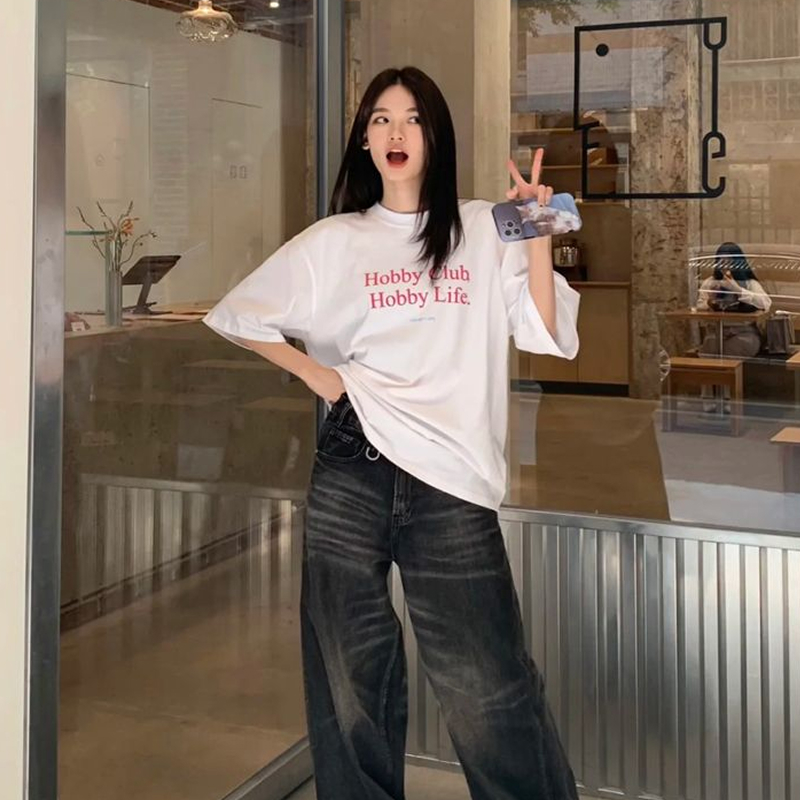Introduction: The Language of Youth Through Clothing
Fashion has always been a reflection of identity, rebellion, and belonging. Among all garments, T-shirts and hoodies stand out as the most democratic yet powerful symbols of youth culture. Simple, affordable, and customizable, they have served as uniforms for countless subcultures—from rock ’n’ roll to hip-hop, from skateboarding to esports, from political protests to viral TikTok trends.
This essay explores how T-shirts and hoodies became cultural bridges across generations. We will travel from the rebellious youth of the 1960s to Gen Z’s digital-first era, uncovering how these basics evolved from underground statements to global mainstream staples.
Chapter 1: The Roots – When Basics Became Symbols
The T-Shirt as Rebellion
- In the early 20th century, T-shirts were undergarments. But in the 1950s, icons like James Dean and Marlon Brando wore plain white tees as outerwear, scandalizing older generations.
- The T-shirt transformed into a symbol of individuality and defiance, paving the way for future subcultures to adopt it.
The Hoodie as Subcultural Armor
- Born in the 1930s for athletes and workers, the hoodie gained cultural weight in the 1970s.
- For skaters, rappers, and graffiti artists, it provided anonymity, warmth, and a visual identity of resistance.
- Early media demonized the hoodie as threatening, cementing its rebellious aura.
From the beginning, both garments carried an undercurrent of subversion.
Chapter 2: Baby Boomers (1946–1964) – Rock, Protest, and Rebellion
Rock ’n’ Roll Tees
Boomers were the first generation to wear graphic T-shirts en masse. Band tees—The Rolling Stones, The Beatles, Led Zeppelin—turned clothing into souvenirs of identity.
Protest Tees
In the 1960s, T-shirts became canvases for anti-war slogans, peace signs, and civil rights messages. A plain white tee could be spray-painted with a protest slogan overnight.
Early Hoodies in Athletics
Boomers primarily saw hoodies in sports. College sweatshirts with hoods marked campus pride, foreshadowing the hoodie’s transition into casual youth style.
For Boomers, the T-shirt was rebellion; the hoodie was athletic utility.
Chapter 3: Generation X (1965–1980) – Counterculture and Subcultures
Punk and DIY T-Shirts
Gen X embraced punk aesthetics—ripped tees, DIY prints, safety pins. Wearing a torn T-shirt wasn’t laziness; it was a political act against consumerism.
Skateboarding and Hoodies
By the 1980s, skateboarding exploded. Hoodies became the unofficial skater uniform—practical, oversized, and protective against falls. Brands like Thrasher tied hoodies to skate identity.
Hip-Hop’s Hoodie Statement
In New York’s Bronx, the hoodie became integral to hip-hop style—paired with sneakers, gold chains, and oversized silhouettes. It carried both street credibility and cultural pride.
For Gen X, T-shirts and hoodies embodied rebellion against mainstream fashion, carving subcultural identities.
Chapter 4: Millennials (1981–1996) – Globalization and Branding
The Rise of the Branded Tee
Millennials grew up during globalization and the rise of fast fashion. Logos from Nike, Adidas, Supreme, Abercrombie & Fitch became must-haves. Branded tees weren’t just clothes—they were status markers.
College Culture and Hoodies
The hoodie became campus culture’s signature. University hoodies symbolized belonging, while zip-up hoodies fit the new casual tech startup style—think early Mark Zuckerberg in Silicon Valley.
Music Festivals and Graphic Explosion
From Coachella to Warped Tour, Millennials embraced band and festival tees as identity souvenirs. A hoodie with a tour logo meant belonging to a cultural moment.
For Millennials, basics became commodities of belonging and globalized branding.
Chapter 5: Generation Z (1997–2012) – Digital Natives and Streetwear Kings
Meme and Statement Tees
Gen Z turned T-shirts into viral billboards. A single meme printed on a tee could spread like wildfire on Instagram and TikTok.
The Hoodie as Streetwear Luxury
For Gen Z, hoodies aren’t just casual—they are status symbols. Streetwear brands like Off-White, Palace, Supreme, and Balenciaga elevated hoodies to luxury items, often reselling for thousands of dollars.
Gender Fluidity and Oversized Fits
Gen Z rejects rigid gender norms. Oversized hoodies and tees became gender-neutral uniforms. Comfort and inclusivity define their fashion ethos.
For Gen Z, T-shirts and hoodies are both casual staples and cultural flexes—digital-native fashion currency.
Chapter 6: Generation Alpha (2013– ) – The Future in Progress
Though still young, Gen Alpha is growing up in a world where:
- Virtual hoodies and T-shirts exist in Roblox and Fortnite.
- Sustainable fabrics matter more than ever.
- AI-generated designs shape new forms of customization.
For them, the line between physical and digital basics will blur entirely.
Chapter 7: Case Studies – Subcultures to Mainstream
Rock to Fast Fashion
What started as underground band tees became H&M graphic T-shirts in every mall.
Skate Hoodies to Luxury
Skater hoodies once sold for $20 now inspire luxury runway pieces worth $800.
Protest Slogans to Global Campaigns
From “Make Love Not War” in the 1960s to modern Black Lives Matter tees, basics continue to amplify voices.
Chapter 8: Why Basics Endure Across Generations
- Affordability: Every generation can access them.
- Adaptability: They shift from rebellion to mainstream seamlessly.
- Symbolism: They carry identity, whether protest, pride, or luxury.
- Comfort: Practicality ensures their longevity.
T-shirts and hoodies are time travelers of fashion—always evolving, never disappearing.
Chapter 9: Looking Ahead – The Eternal Youth Uniform
The future will bring:
- Sustainable essentials as ethical must-haves.
- Digital wardrobes where hoodies exist online as well as offline.
- Cross-cultural unification—Tokyo, New York, Lagos, and Paris youth all speaking the same language of basics.
The cycle will continue: rebellion, adoption, mainstreaming, and reinvention.
Conclusion: Subculture Becomes Mainstream
From the white T-shirt of James Dean to the oversized Balenciaga hoodie on a Gen Z influencer, basics have shaped and reshaped youth culture across decades. They symbolize rebellion, belonging, comfort, and identity.
Each generation reinvents T-shirts and hoodies to fit its values, but one truth remains: they are the eternal uniforms of youth.



